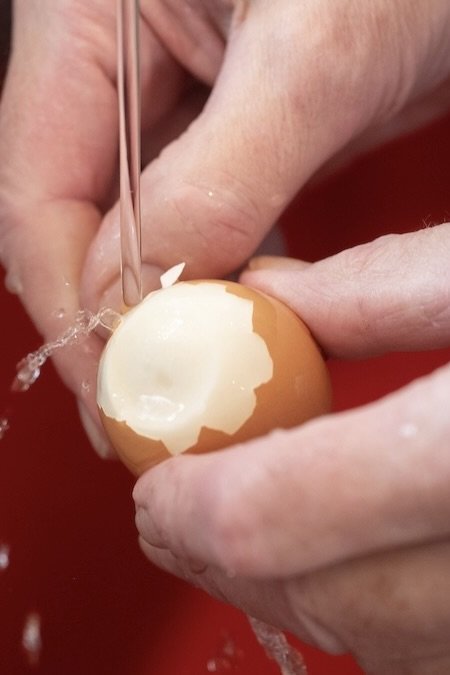THREE WAYS WITH HUEVOS
Photo from Polina Tankilevitch on pexels.com
Given the popularity of high-protein diets, the egg is ideal eating. The albumin (or white) of an egg delivers close to six grams of protein. Because we tend to eat eggs in pairs, that’s a good amount of protein. And the yolk is no longer the cholesterol bogeyman that it once was; it’s got fat, sure, but “good fat,” plus a host of vitamins and minerals, so don’t shun it out of hand.
The old marketing slogan still holds: the egg is incredible.
I’ve learned a lot about cooking eggs that I want to share with you. I’ve found that at least one factor is more important than any other given three regularly scheduled ways of preparing eggs.
Scrambling
Always whisk the eggs to be scrambled at least 15 minutes before cooking them and with 1/4- to 1/2-teaspoon measure of salt, to taste. The salt breaks down the protein in the whites and, consequently, when scrambled over heat, those proteins will not “seize up” and squeeze out the eggs’ moisture, drying up the scrambled eggs. The salt and the 15 minutes, in other words, help guarantee creamy scrambled eggs—what you want.
Hard cooking
A thin membrane separates and protects the interior of the egg from its porous shell. This same membrane is the bain of all those who try to peel a hard-cooked egg.
Knowing about and how to deal with the membrane can help peeling immeasurably. Shock the egg to be hard-cooked into its boiling water immediately after taking the egg from the refrigerator. That is, cook cold eggs. When the timing ends on the cooking, plunge the egg into an ice water bath. That is, make the egg cold again very quickly.
This method help keep the membrane looser, less “clingy,” than it otherwise would be, and makes for easier peeling, typically under slowly running water.
Poaching
There are two sorts of whites in an egg, especially noticeable in the freshest eggs: a firmer, thicker white that immediately surrounds the yolk in, essentially, an oval shape, and a runnier, far less firm white surrounding those both.
Let the runny egg white slip through the fingers of your palm (or the slots of a spoon) after cracking open the egg and poach only the firmer white and the yolk in barely simmering water. This makes for a very pretty, less “raggy” poached egg. (For more poaching tips, see this story I wrote for UCHealth.org on How to Cook Eggs. Plus, check out this video where I show you How to Poach an Egg.)
About cracking an egg, do so on a firm, flat surface such as a counterspace, not the edge of a bowl or skillet. Doing so lessens the chance of a piece of shell entering the mass of cracked egg or eggs. If a piece of shell does fall into the bowl or pan, use a large piece of shell to scoop it out. Shell attracts shell; you know how a fingertip does not!

